In the summer, Ajax were the club that suffered the most extensive open heart surgery of any side in European football.
The club lost 13 first-team players permanently, accumulating a transfer income of more than £200 million. It wasn’t just players either; the Dutch giants also lost their manager Erik ten Hag, as well as his assistant manager Mitchell van der Gaag, with both men now sitting in the dugout at Manchester United.
Club Brugge boss Alfred Schreuder was placed in charge and the board began to work closely with the manager to stitch up the gaping wounds within the squad.
Schreuder has done a wonderful job thus far, with the side sitting top of both the Eredivisie as well as second in the team’s UEFA Champions League group, which includes Rangers, Liverpool and Napoli.
The departed players have been seamlessly replaced with summer additions as well as younger players within the squad.
One star who’s stepped up to the plate is Mohammed Kudus.
Last season, Kudus scored just once in 20 appearances for the Eredivisie champions, so when Schreuder called upon the Ghana international to fill the massive boots of Sébastien Haller, it raised a couple of eyebrows. However, already this season, the 22-year-old has repaid the manager’s faith, bagging 7 goals in merely 10 appearances.
This tactical analysis piece will be a scout report of Kudus’ strengths and weaknesses. It will also be an analysis of how the Ghanaian has slotted into Schreuder’s incredibly fluid tactics this season.
Mohammed Kudus Style Of Play
Kudus’ role within Ajax’s first team has been really flexible over the past 12 months. It seemed as though Ten Hag saw the Ghanaian as a utility player — someone who can operate in several different positions.
Given how fluid Ten Hag’s tactical system was, and how pliable Kudus is, it was quite a good match. The versatile attacker was used as a number ‘8’ on the left and right side of the midfield trio, as a number ‘10’ in Ajax’s 4-2-3-1, as well as on the flanks and even occasionally leading the line.
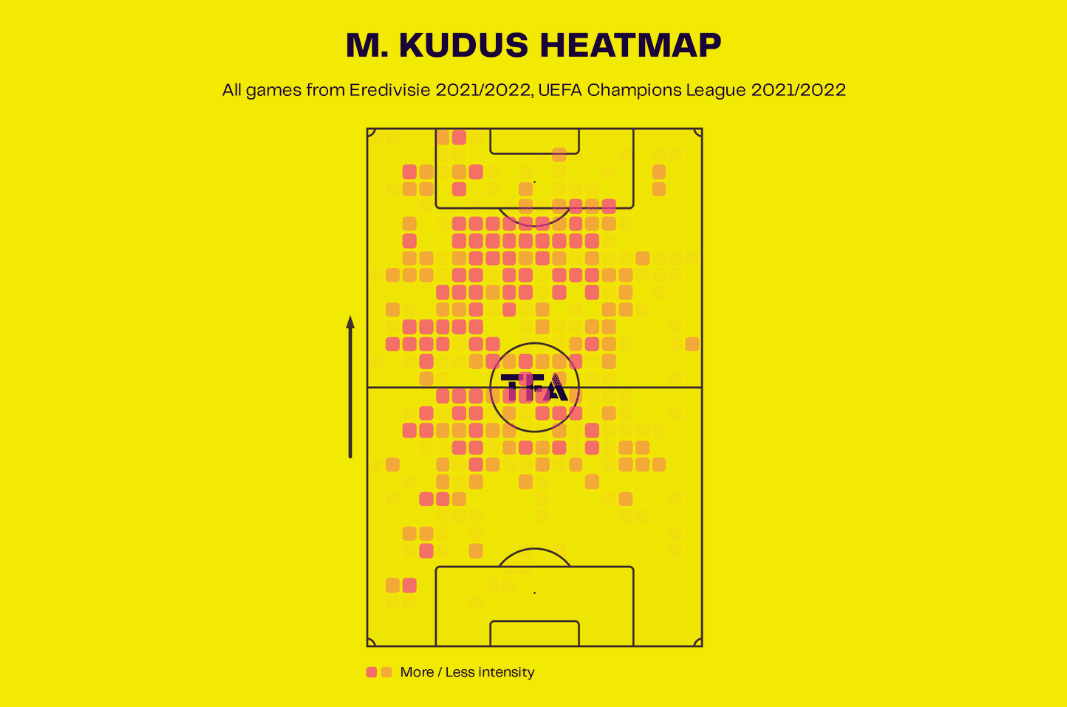
This image displays Kudus’ heatmap from 2021/22 for Ajax. As we can see, there is quite a lot of action in the advanced areas of the pitch where an attacking midfielder would operate, as well as in the deeper areas and half-spaces.
However, when Schreuder came in, replacing the outbound Manchester United manager, he found a much more refined role within the team for the young and nimble Kudus.
This season, Kudus has primarily been deployed as a number 9, starting as the lone striker. While he still drops deep to receive and is sometimes even pushed out to the flanks, the 22-year-old has had much more involvement in the final third than in the previous campaign.
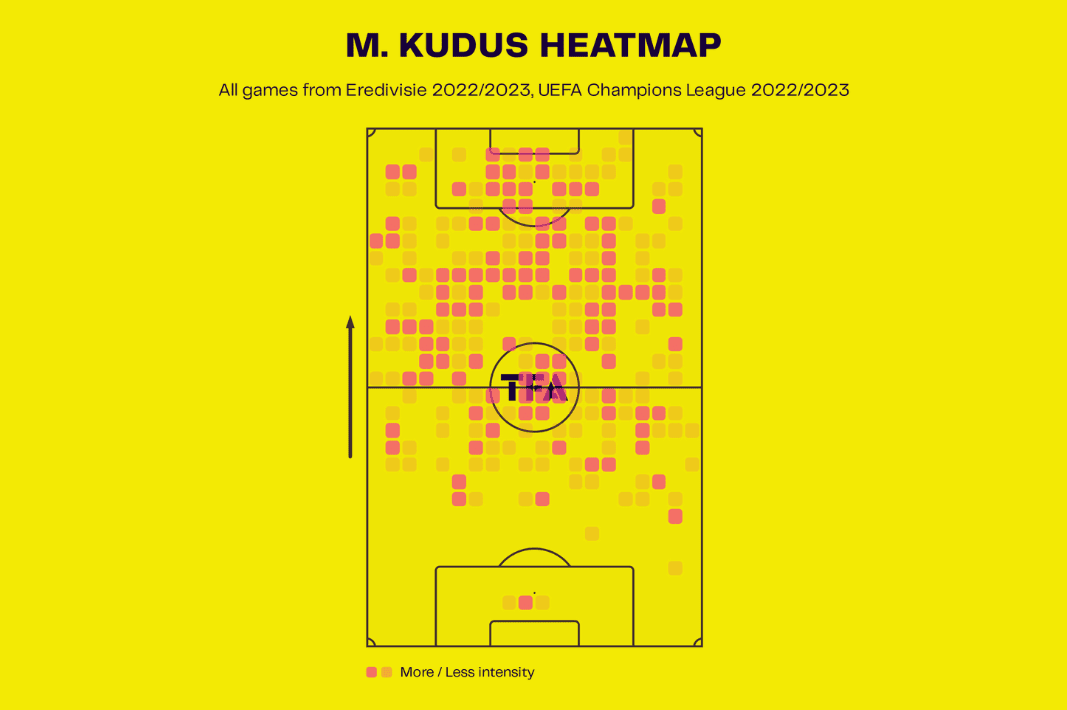
Respectfully, Kudus is a rather slight player. This is a massive contrast from Haller, who led the line last season under Ten Hag. The centre-forward is 5’10 which is a nice height for a frontman, but he weighs merely 154lbs or 70kg, meaning he is definitely on the leaner side.
Regardless, Kudus uses his body impeccably well and is certainly no pushover for any centre-backs. He is aggressive, tenacious and dogged but has a plethora of wonderful qualities in his locker too. Let’s analyse the striker’s overall game.
Ball-carrying and dribbling
One of the left footer’s best traits is undoubtedly his dribbling ability. Kudus is extremely useful for Ajax when he drops short to receive, as the Ghanaian is excellent at receiving in tight areas before spinning and looking to drive forward.
Upon reception of the ball, opposition defenders instantly jump the attacker in order to close him down before he can turn on the ball. Usually, this drags at least two players out as the defensive side attempt to press Kudus. In turn, this frees up space elsewhere for his Ajax teammates to get the ball in space.
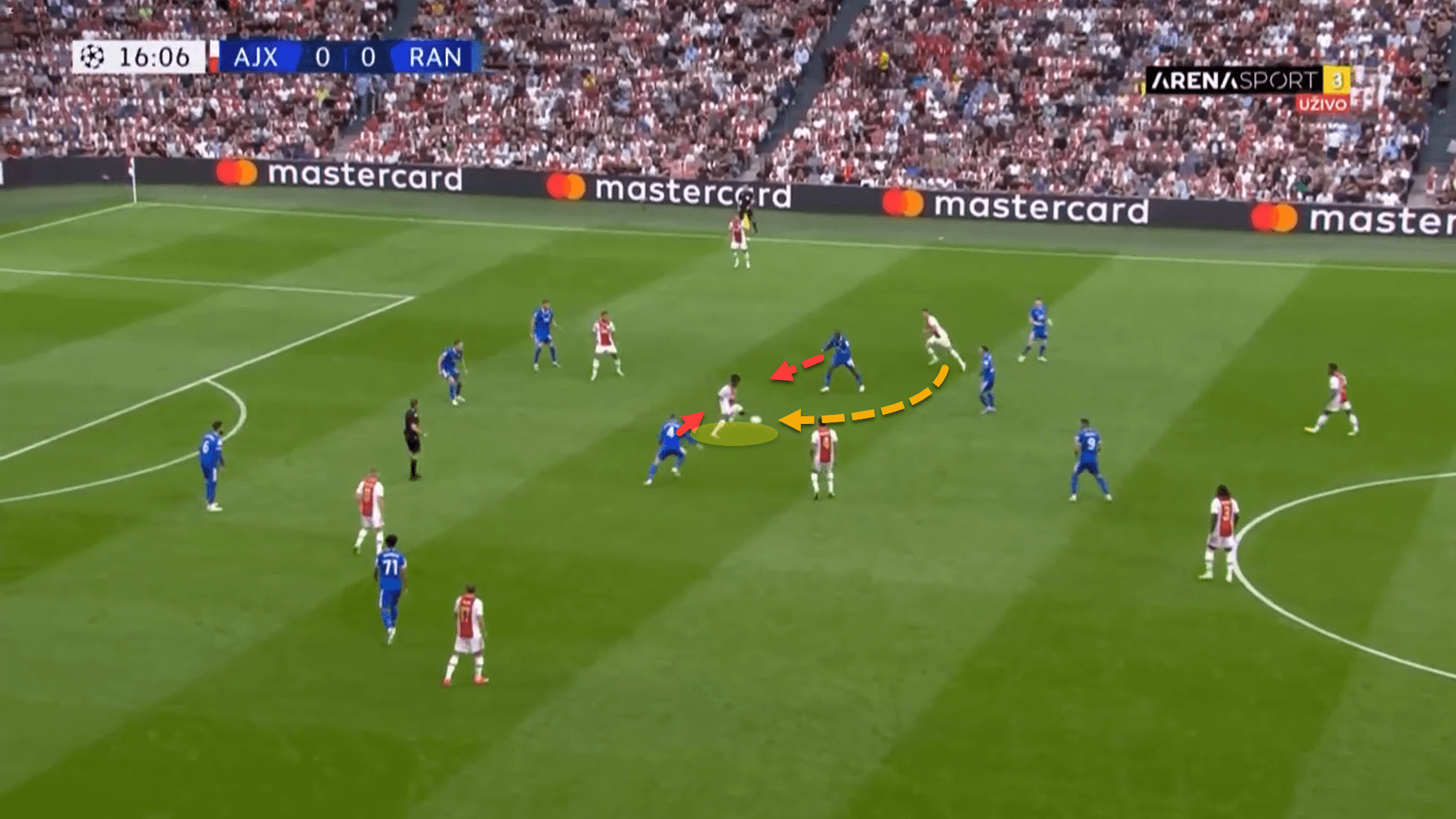
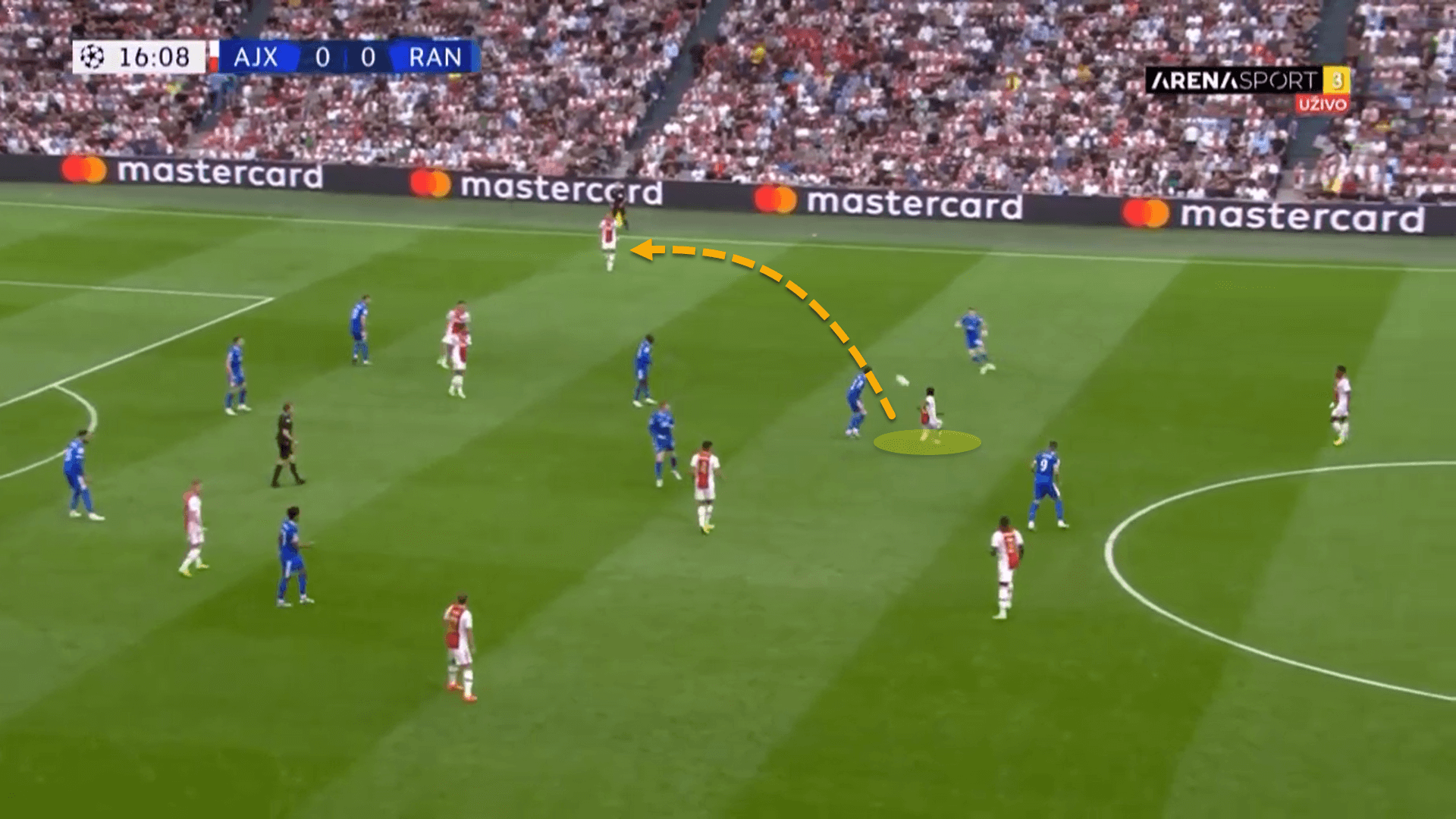
Here, Kudus has received the ball by dropping deep and calling for a progressive pass. Once the ball reaches his feet, he quickly controls it but gets pressed by two Rangers players.
Using his low centre of gravity, Kudus dribbles his way out of danger and switches the play out to the right-back who is free on the wing, progressing Ajax to the edge of the box where the fullback can then look to cross into the area.
Kudus averages 4 dribbles per game in all competitions, boasting a success rate of 50%, overall.
This was an example of Kudus using his talents to help free up teammates on the flanks, but the player is also incredibly adept at just turning on the ball too and driving forward when a defending player jumps him from behind. Kudus often waits for the pressure to come before swiftly flicking the ball to his right or left and dribbling past his man.
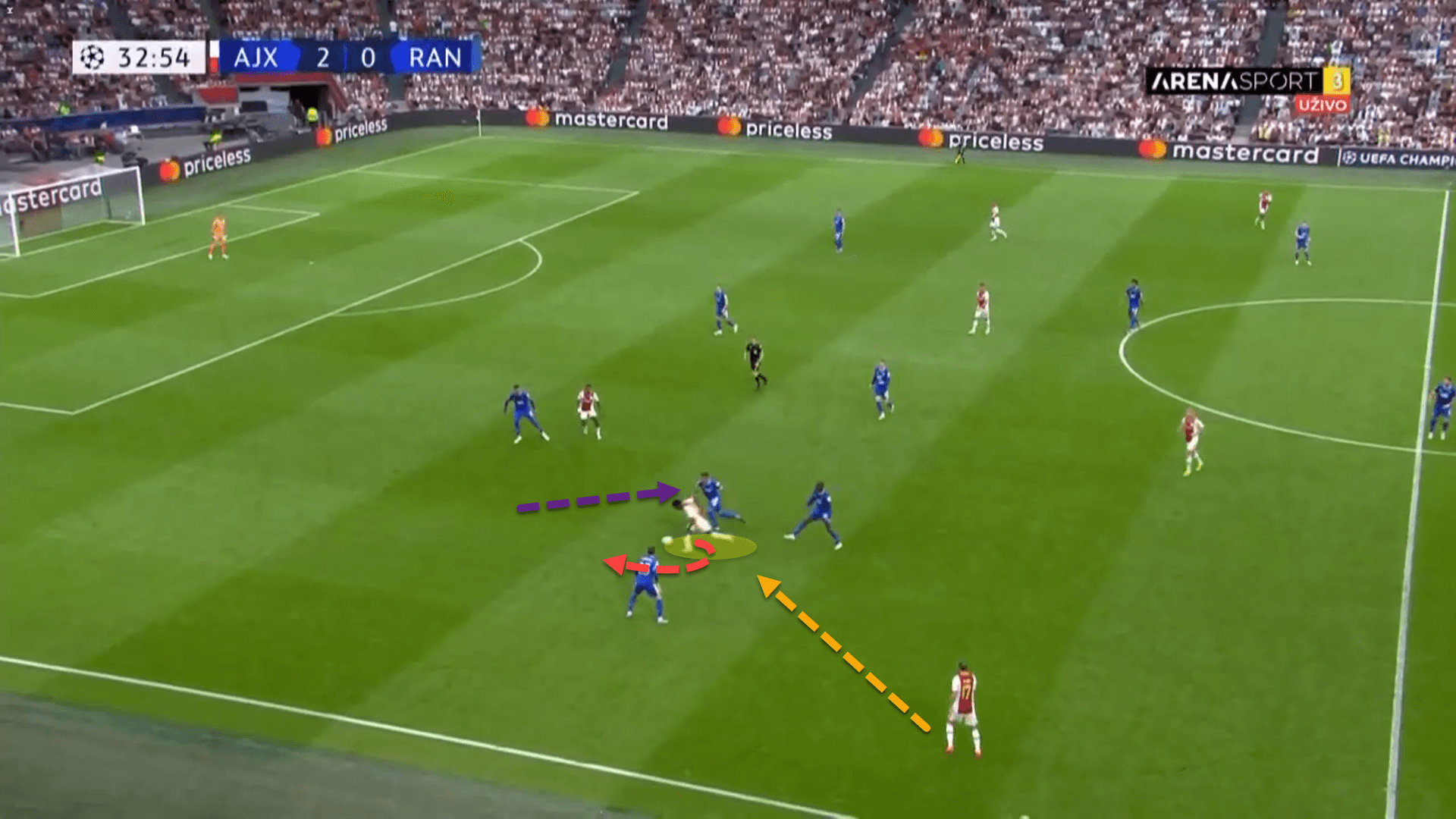
In this example, again against Rangers, Kudus waits for the fullback to step up to close him down before he pushes the ball to his right and takes it into the vacated space down the left.
This all happens in a matter of seconds, so is inexplicably difficult to defend against. The 22-year-old is rapid and once he turns his man, all hell can break loose. The forward is so efficient at progressing the ball into higher areas of the pitch with his dribbling and progressive runs, which makes up for his lack of creative nous in the final third.
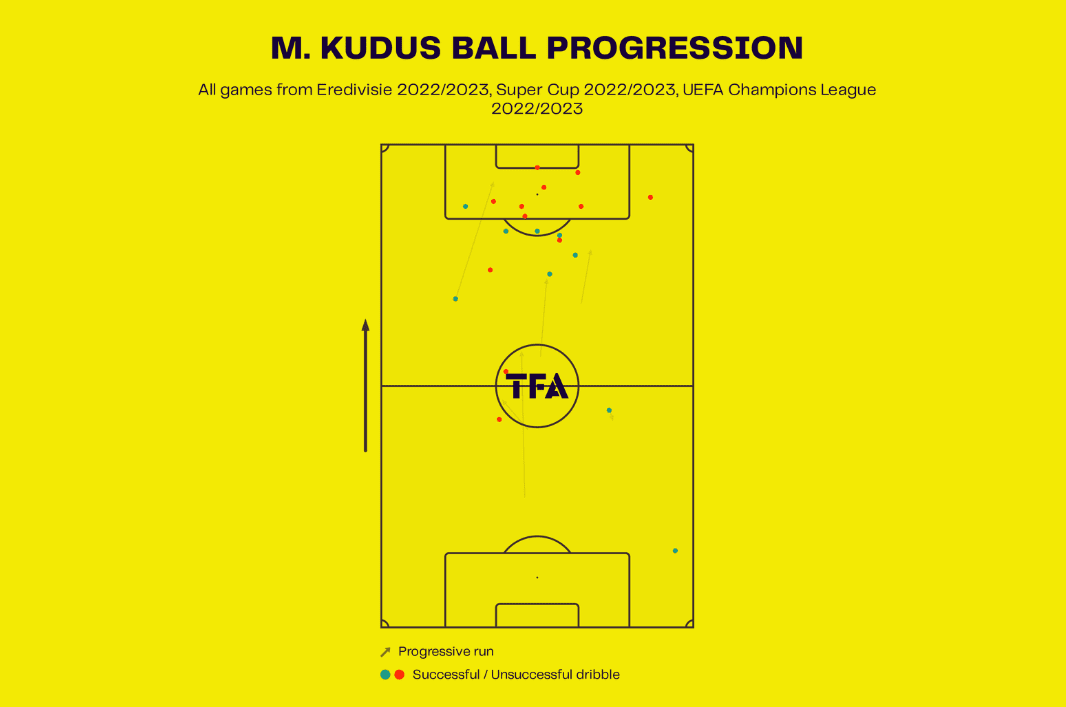
This data viz shows us just how good Kudus is at ball progression, without even needing to pass, proving that the Ghana international is a menace while running with the ball. Kudus is also deadly when it comes to taking the ball into the penalty area.
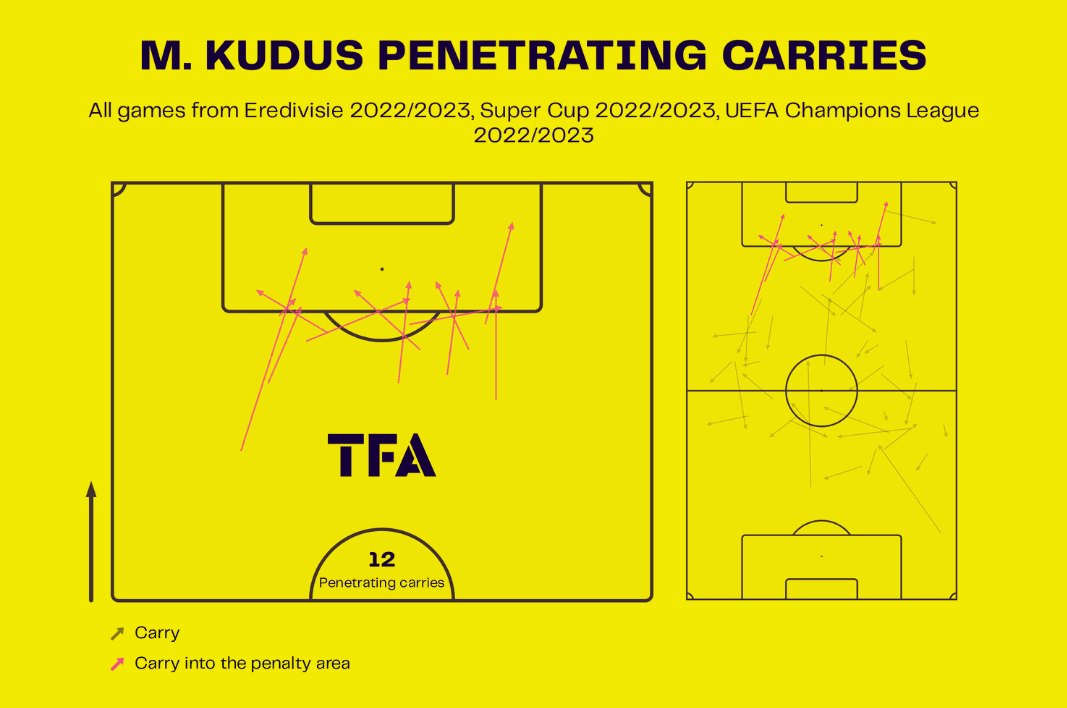
Again, using his sumptuous talents and low centre of gravity, the Ajax forward has registered 12 progressive carries into the box this season in all competitions for the Dutch giants. All of these carries have come from the central areas too, the most congested area of the pitch, which is even more impressive.
A prolific goalscorer
As stated earlier in this scout report, Kudus was not notoriously known for his goalscoring. While Ten Hag saw him as a useful squad player, capable of playing in a plethora of different positions, the Right to Dream academy product was certainly not efficient in front of goal.
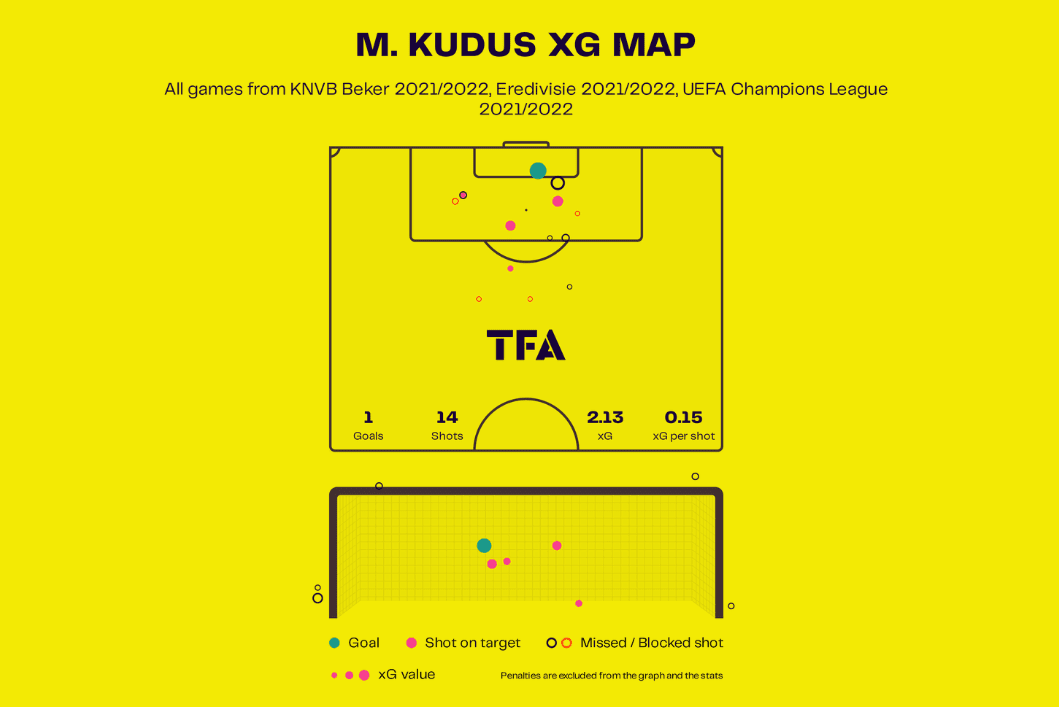
This data visual displays all 14 of Kudus’ shots last season for Ajax’s first team across his 20 appearances. The young talent bagged merely one goal. Kudus actually underperformed his xG of 2.13 while each shot averaged an xG of around 0.15, which isn’t terrible but is definitely something that could have been improved upon.
Kudus has absolutely improved on his poor output in front of goal. This season, the Ajax frontman has been nothing short of prolific.
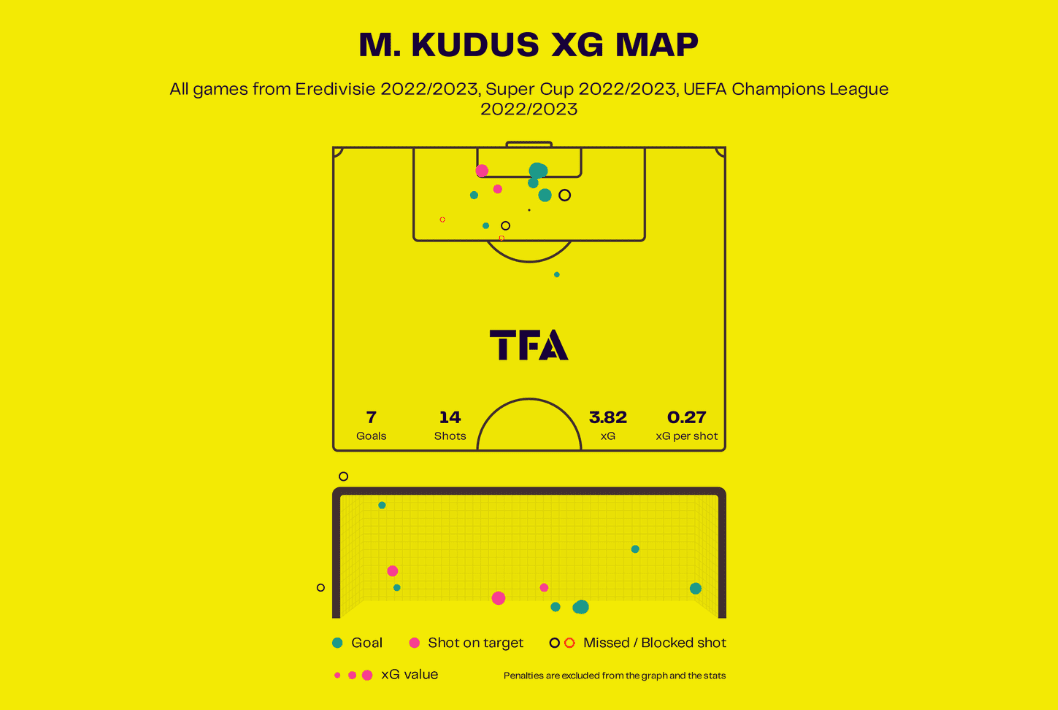
In the 2022/23 campaign, as of writing, Kudus has taken the same number of shots as last term. This time though, the Ghanaian has scored seven times, six more than in the previous season.
Kudus is also overperforming his xG now of 3.82. His xG per shot has massively increased from 0.15 to 0.27, almost doubling, meaning he is getting himself into far better goalscoring positions while his overall finishing has improved significantly.
Of course, this has been helped by the fact that Schreuder has trusted Kudus as the team’s leading centre-forward but it’s still impressive, nonetheless.
A recent goal at Anfield against Liverpool showcased how Kudus is now using his strengths in the box to aid his newfound fruitfulness.
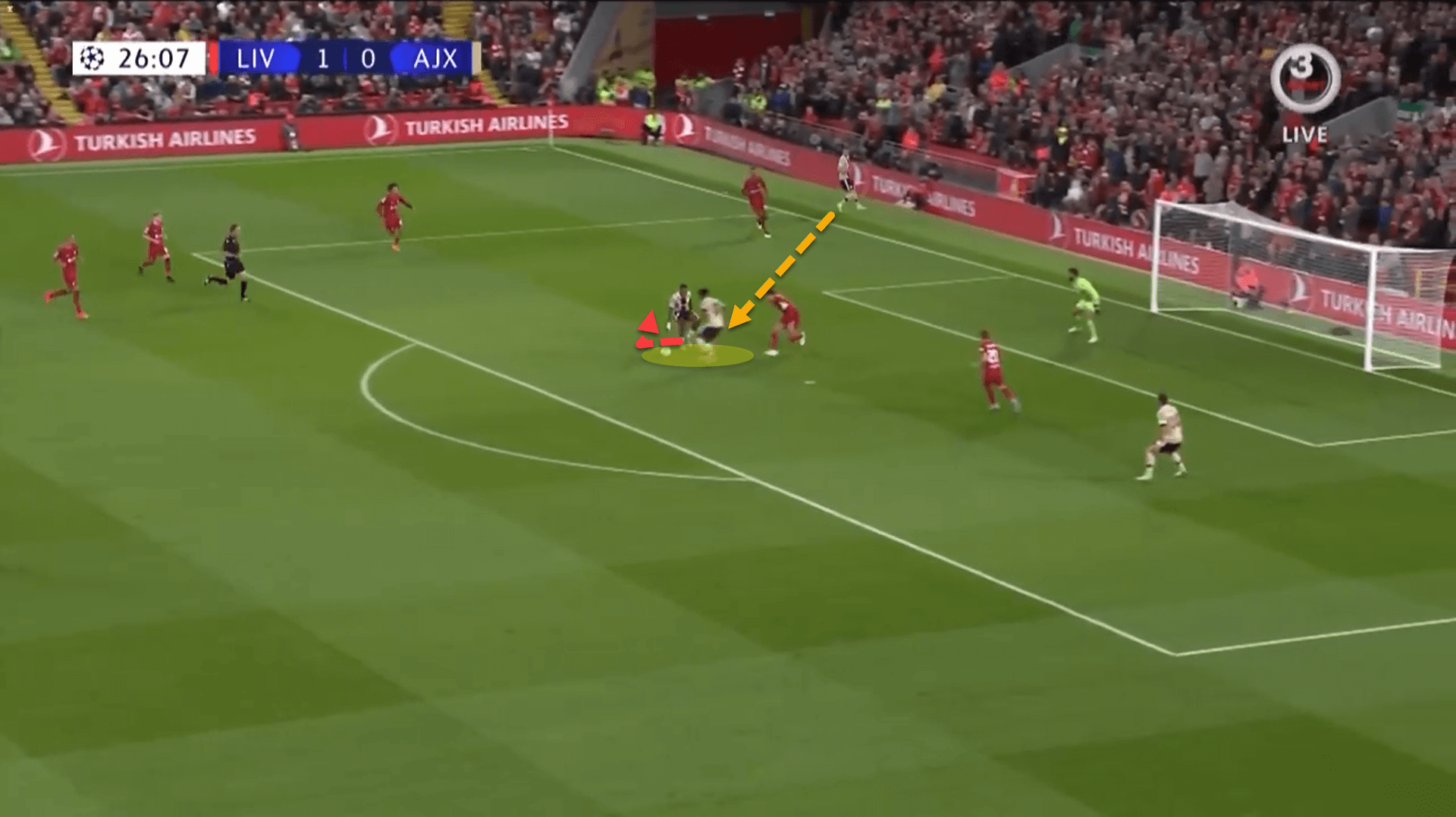
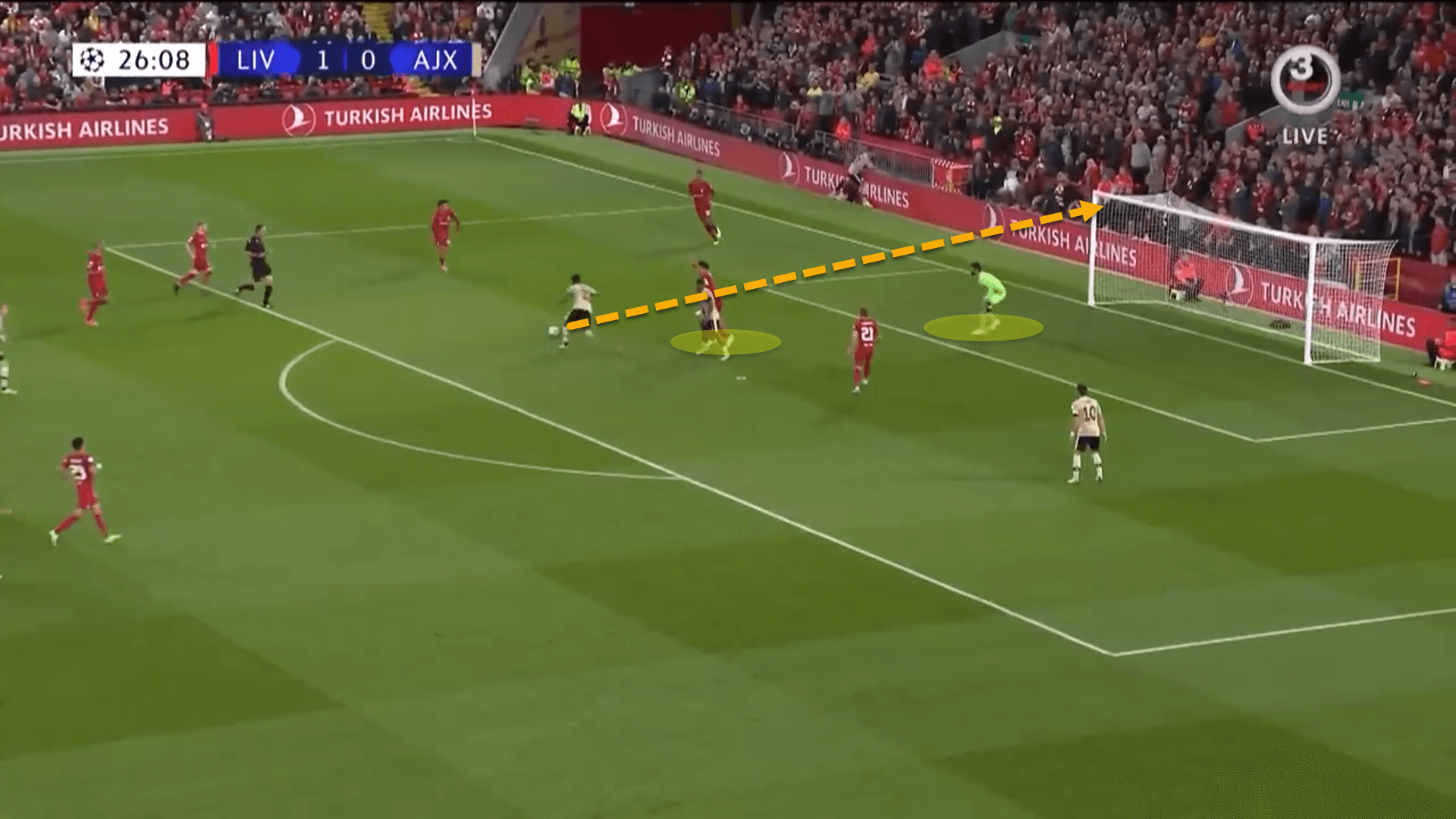
As Steven Berghuis cut the ball back to Kudus in the box, he used his quick movement to drop his shoulder, pushing the ball to the right using his stronger left foot, which caught Virgil van Dijk out.
The Dutch defender couldn’t get out fast enough and opted to drop off to block the shot. With Van Dijk in his sights blocking the far post and Alisson’s large frame in goal, Kudus still managed to smash the ball home by aiming for the top left corner to equalise for the visitors on the night.
While the finish may have looked simple, it certainly wasn’t which is a great testament to Kudus’ improved prowess and potency in the penalty area.
Solid presser
While in the olden days, a striker’s job was simply to score goals, complex pressing structures and defensive systems have refined the role.
Kudus has proven himself capable of leading the line for Ajax with regard to his finishing but centre-forwards now need to be able to press as well, and press he certainly can.
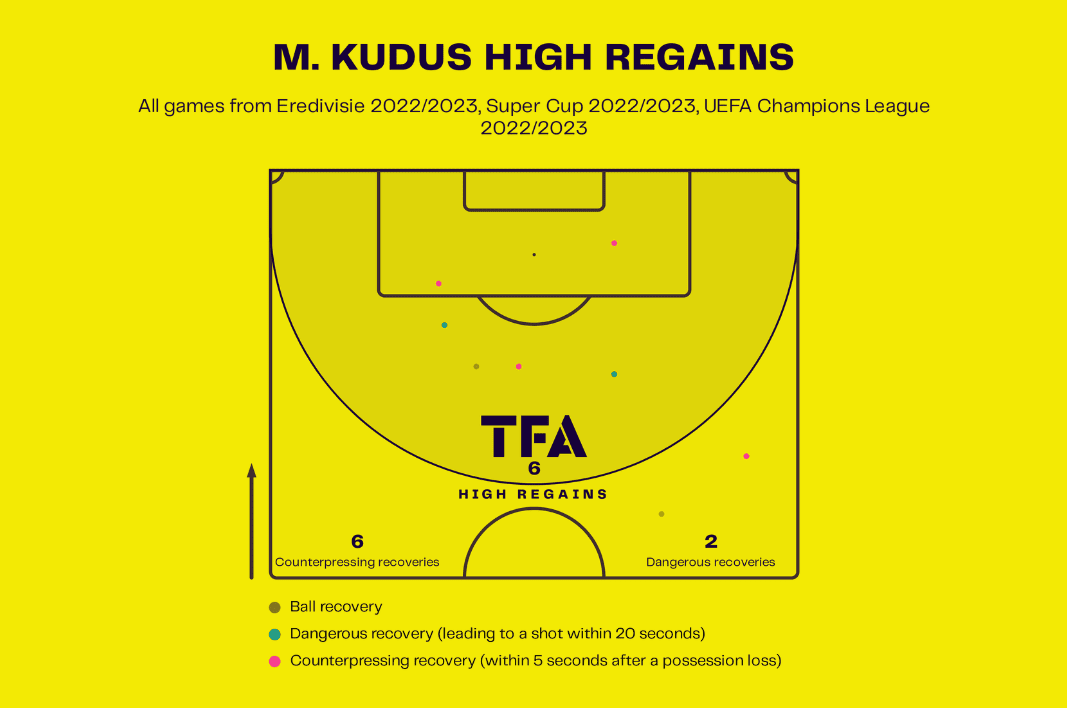
So far this season, Kudus has registered 6 high regains for the Eredivisie champions. On top of this, he also boasts 6 counterpressing recoveries and 2 dangerous recoveries.
As already stated in this scout report, Kudus is rapid and can put defenders under pressure within a split second.
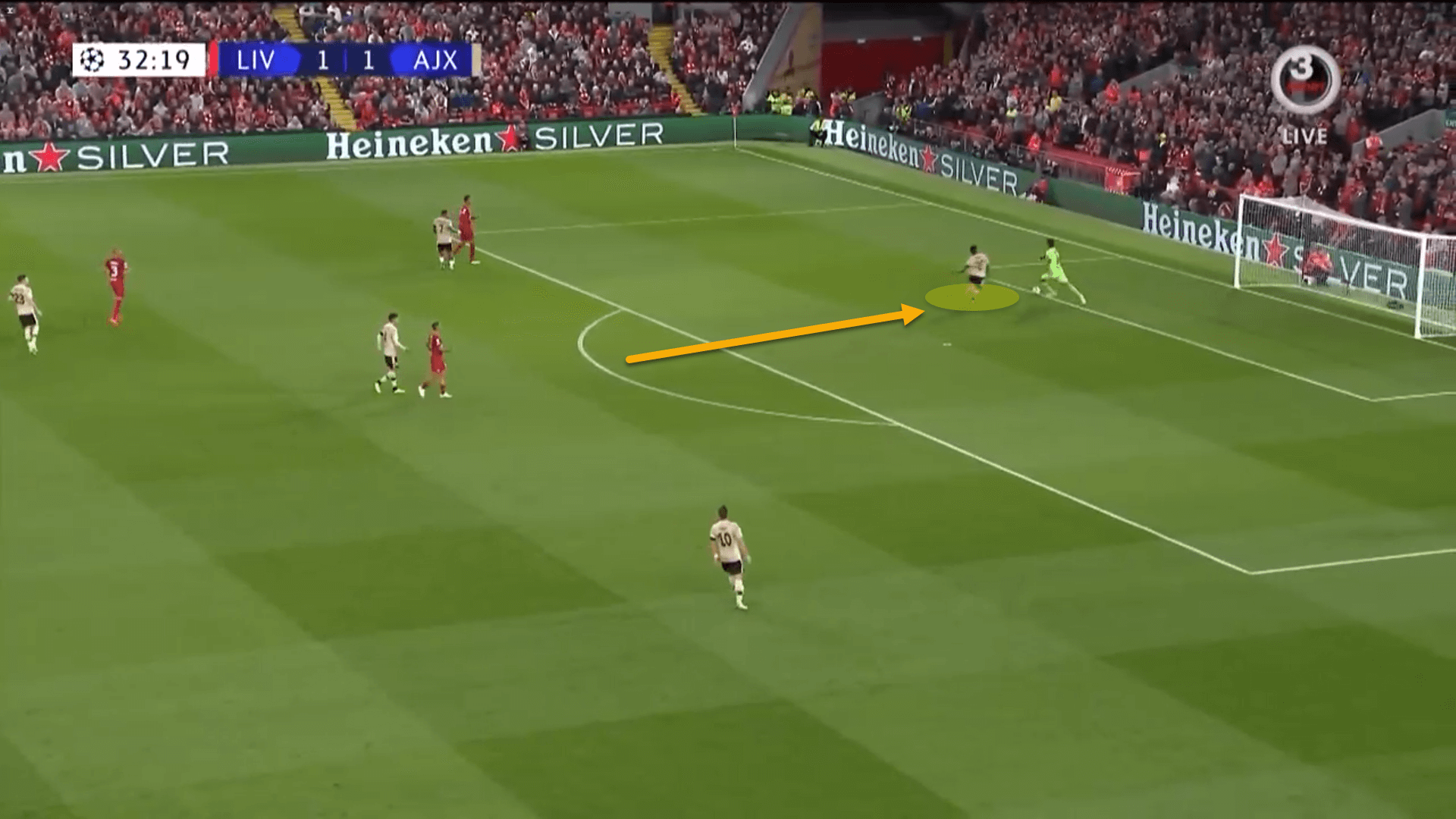
Here, in the side’s UEFA Champions League bout against Liverpool, the home team’s Alisson took a heavy touch on a backward pass. Having initially sat off, Kudus jumped at the opportunity to steal the ball.
Alisson panicked and hoofed it up the pitch but was just a moment away from conceding a nightmarish second goal. You could almost see the dismay in the Brazilian keeper’s face as Kudus bore down onto him like a lightning bolt.
The biggest issue that Kudus needs to work on concerning his pressing is applying successful cover shadows. When sitting in a high block, the Ghanaian is tasked with pressing the opposition’s centre-backs and goalkeeper, angling to his run to cut off access to one side of the pitch and force the ball-carrier to play to the wide areas.
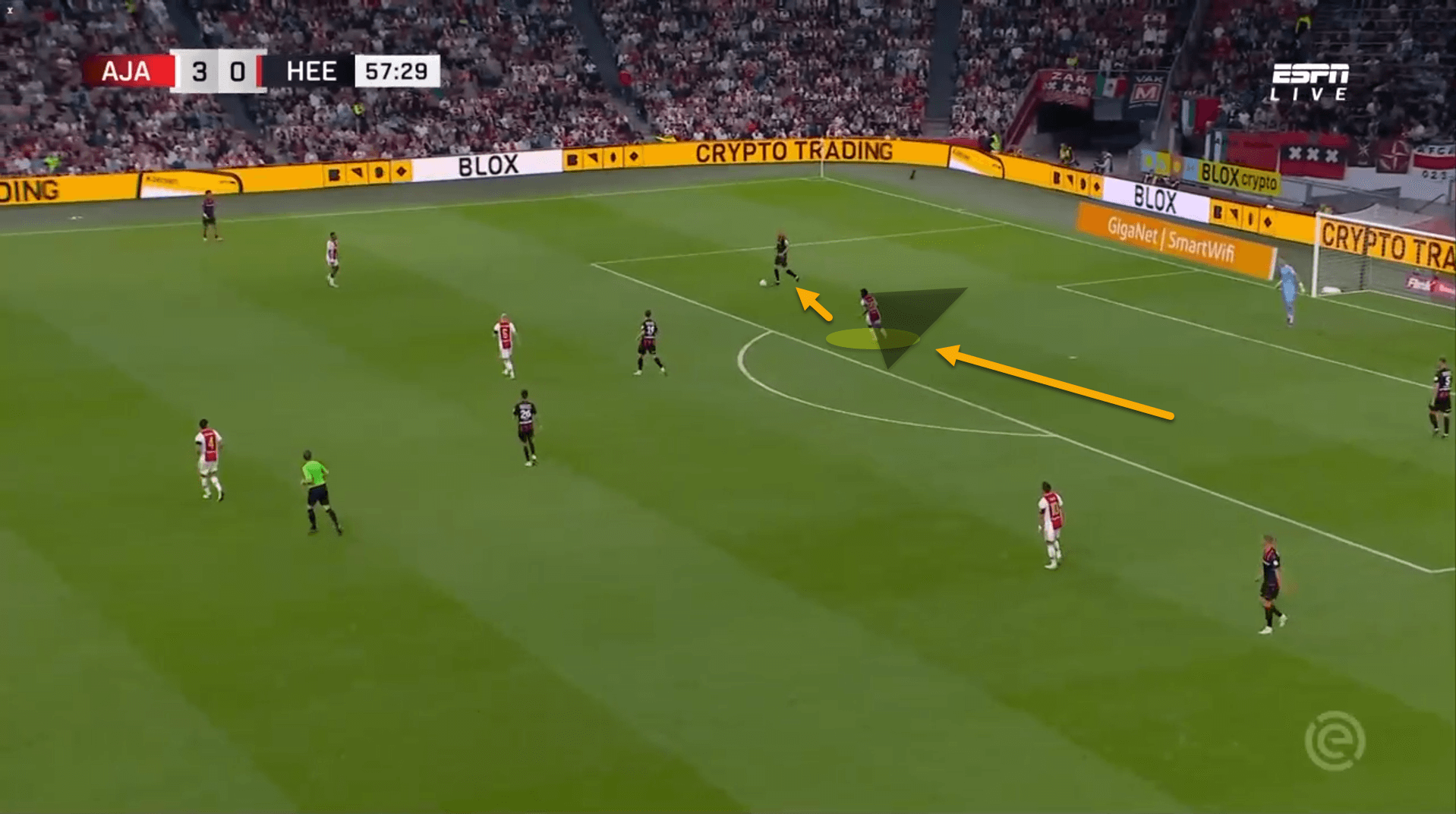
However, on far too many occasions, it can be really easy for Ajax’s opponents to play around him and his pressure, regardless of his intensity, because of his poor cover shadowing.
Kudus is no good when it comes to blocking passing lanes behind him which is certainly an area the 22-year-old needs to improve. Instead of nonsensically running at a defender to press them, Kudus needs to also consider the options behind him.
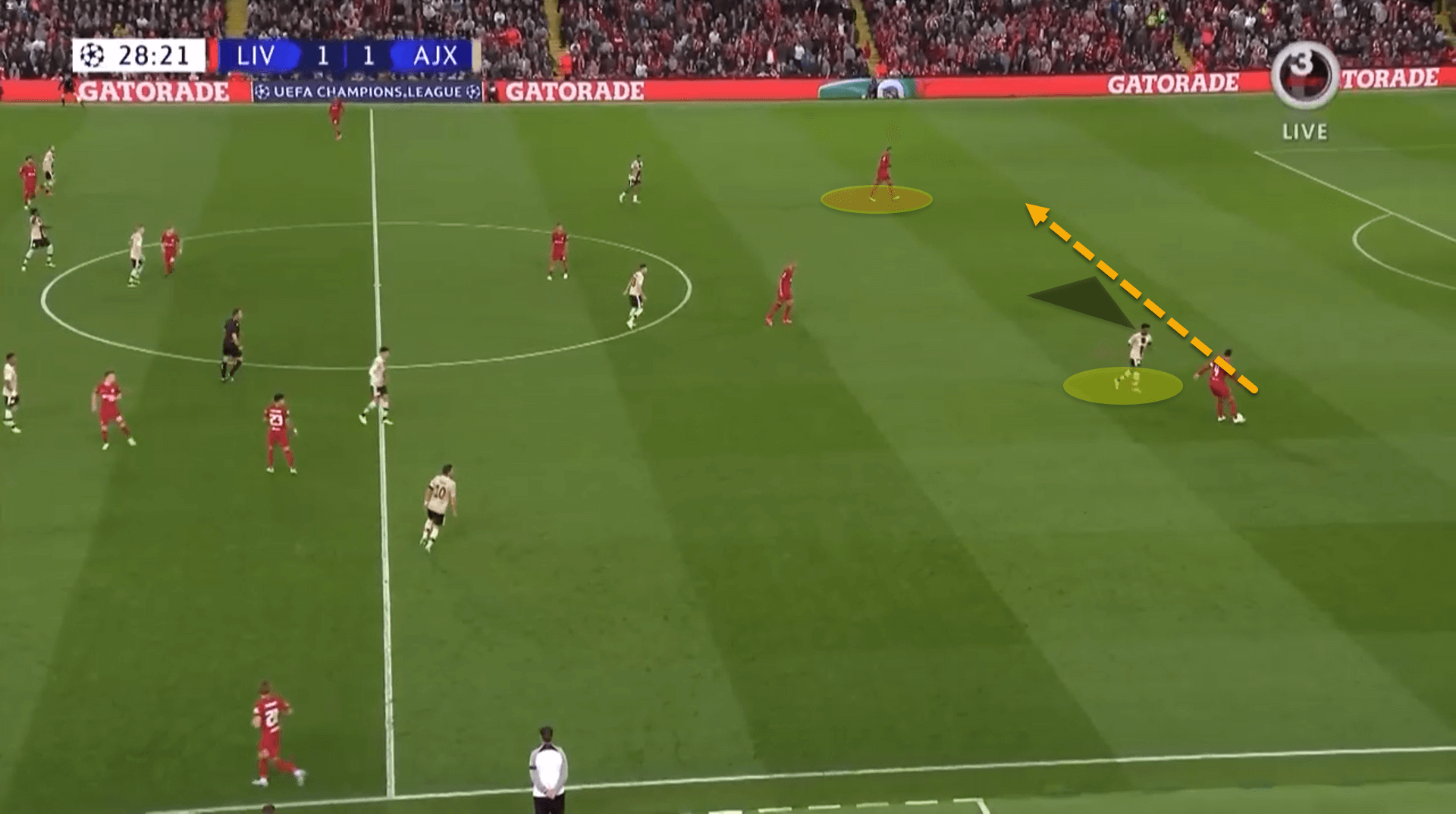
For instance, here, Van Dijk simply played around Kudus’ pressure into Matip as the centre-forward didn’t consider the centre-back who was supposed to be in his shadow.
Kudus has all the right attributes to lead his side’s pressing system given how quick he is off the mark but little tweaks to his game such as improving his application of cover shadows would make him far more menacing for defenders during the opposition’s build-up phase.
Conclusion
Kudus is almost a completely new player from last season when he interchanged between the first team and Jong Ajax in the Eerste Divisie.
Everton were keen to sign the Ghana international during the summer transfer window, but a move never materialised. Perhaps this was for the best as the Ajax star has a full season now to develop at the Johan Cruyff Arena before moving to a top-five league in the near future, which is the likeliest scenario.

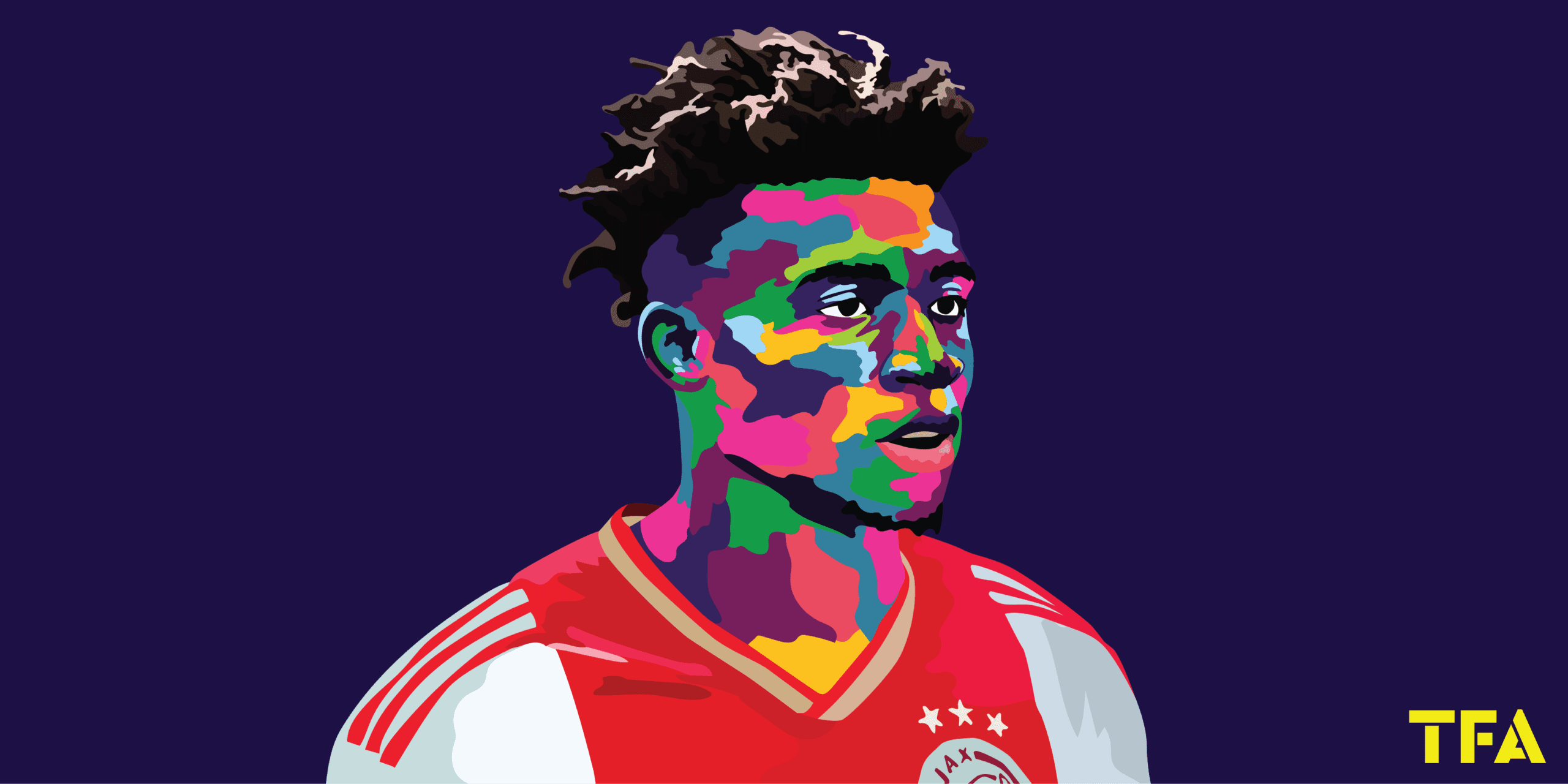



Comments